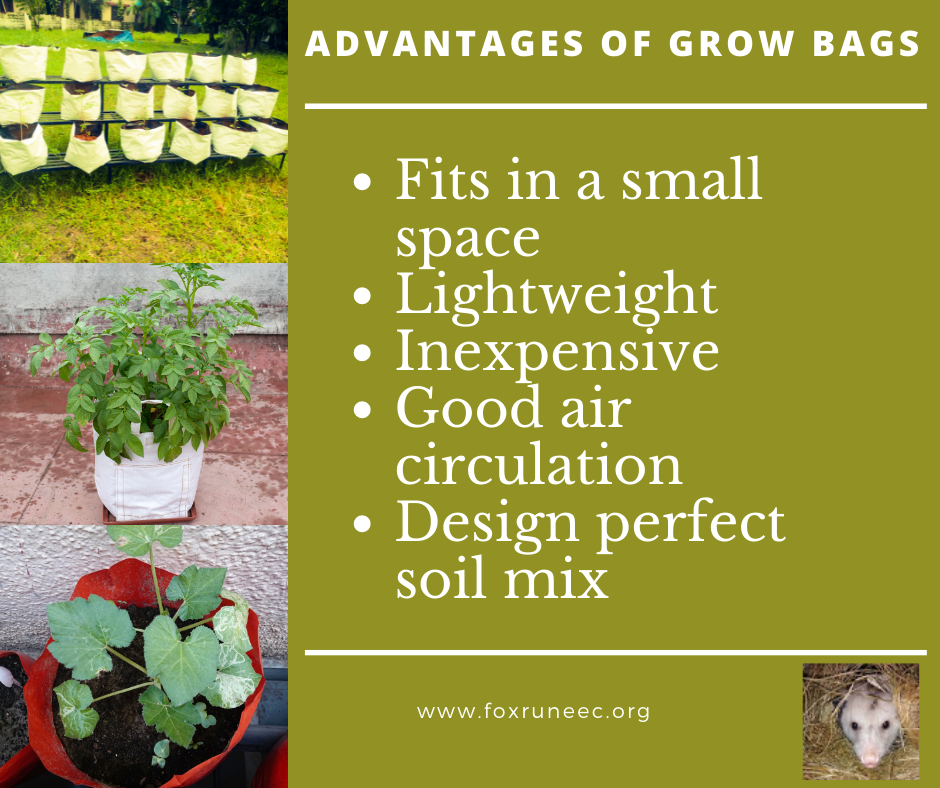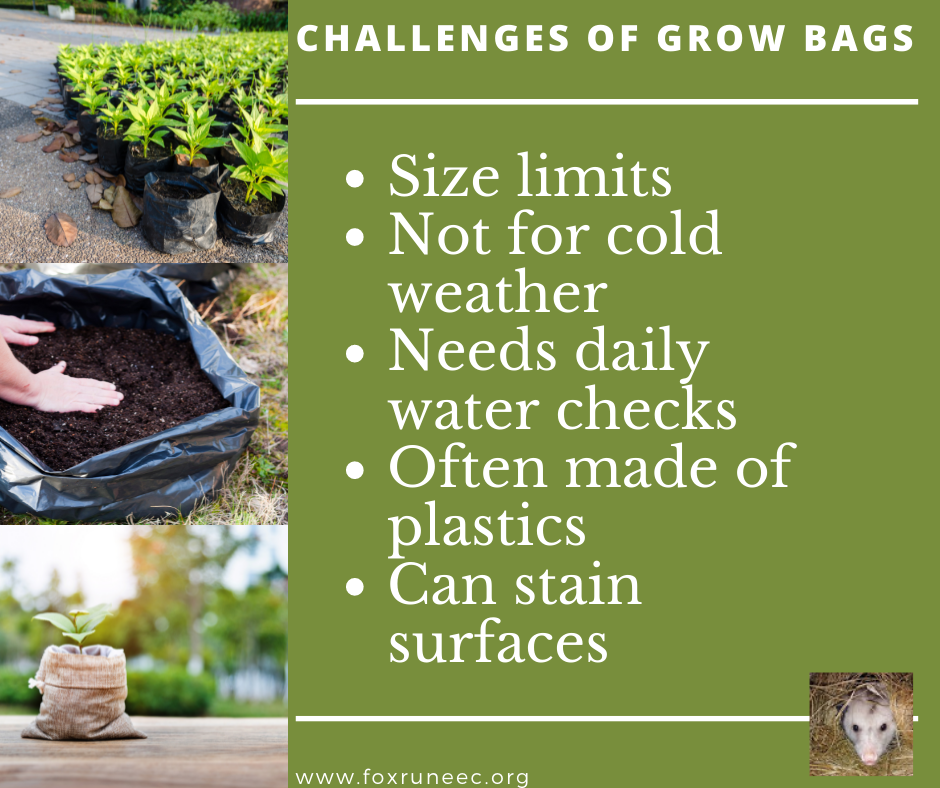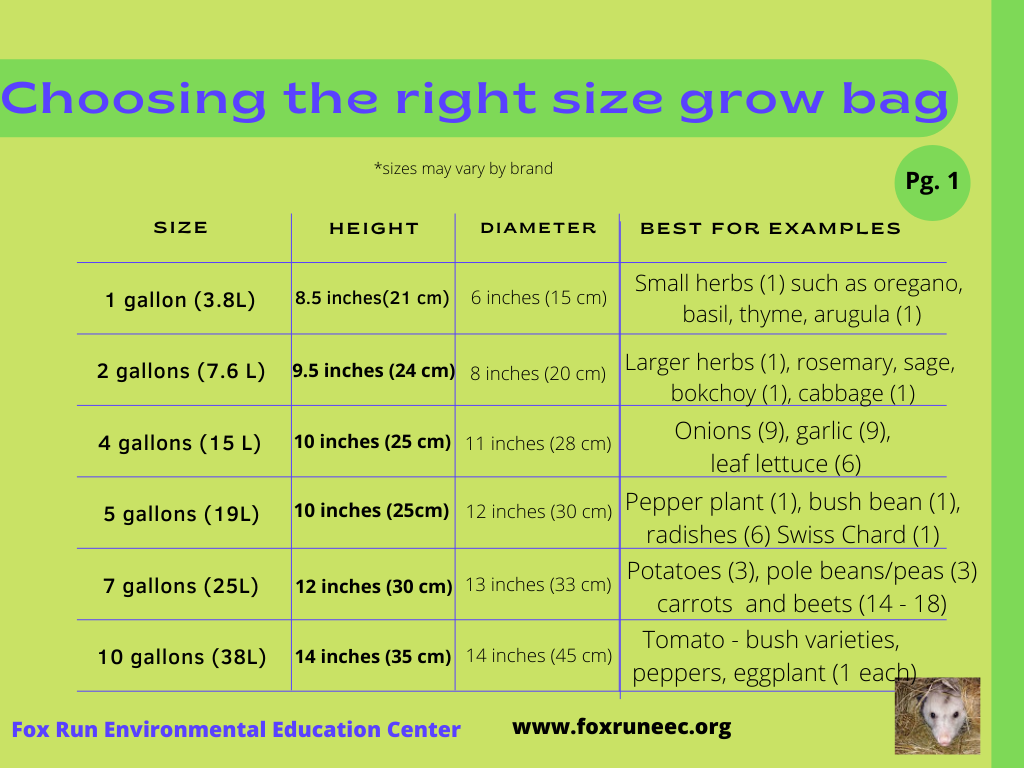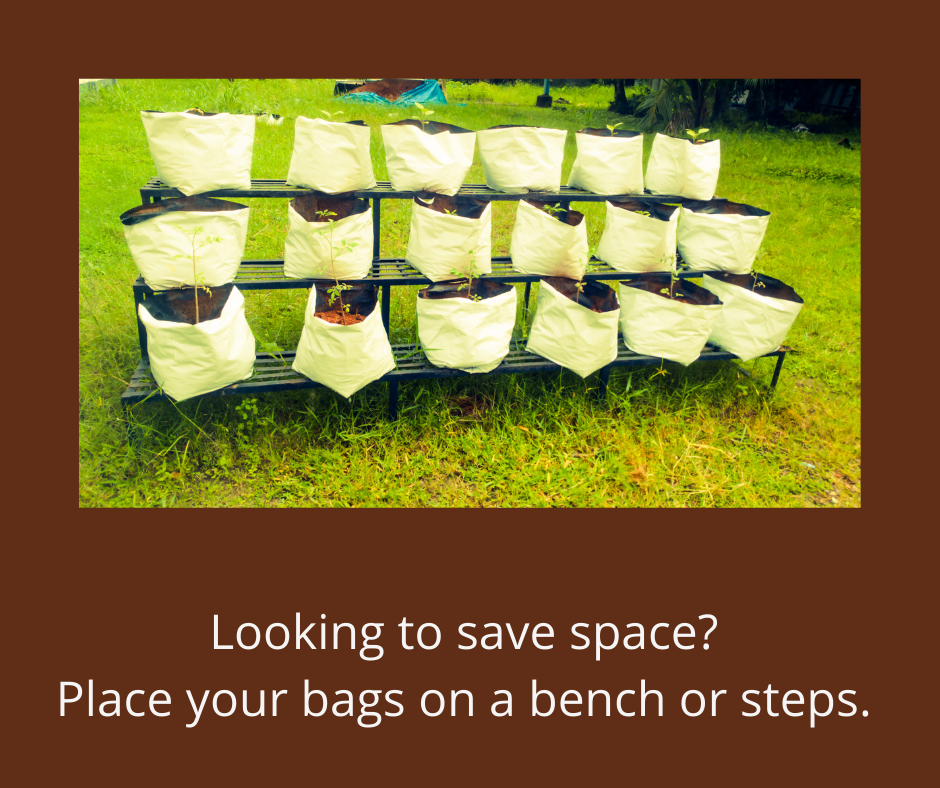Grow bags are a fabulous solution for people who don’t have enough land for a garden but really want one. They are perfect for small spaces such as patios, urban yards, and even a city balcony.
I’ve included lots of charts and pictures so please give the page time to load.
What is a Grow Bag?
A grow bag is a container made of porous material that holds soil and allows water and air to flow through it. This makes grow bags perfect for gardening because the plants can get the necessary nutrients and oxygen they need to grow.
Grow bags are made from thick non-woven fabric that is breathable due to the small holes. They are frequently produced from recycled plastics specifically spunbond polypropylene which is considered safe for gardens.
Benefits of Grow Bags
There are many benefits to using grow bags for gardening.
Lightweight - grow bags are light and easy to move around. This makes them great for rooftops, balconies, and people who are renting.
Flexible - grow bags hold more soil than traditional garden pots, and can be placed closer together. So you can grow more plants in a smaller space.
Growing conditions - grow bags help keep the soil moist and cool, which is ideal for Zones 5 &6 that have warm moist summers.
Inexpensive - Grow bags are cost-effective and you can even make your own. (Check out our DIY options below) You can grow an entire garden of vegetables, fruits, and herbs for next to nothing.
Great book on grow bags. Kevin Espiritu is a fabulous urban gardener
Root crops - great for root crops such as carrots, beets, and potatoes which can be hard to grow in the clay soil of Zones 5 & 6.
Inside or Outside - You can use these bags in or out. Just remember to place a plate or plant saucer under them when you bring them inside.
Vertical crops - squash, cucumbers, tomatoes - do well in grow bags when you add a simple trellis.
Soil mix - design your own soil mix for the variety of plants you are growing.
Air pruning - grow bags prevent roots from circling around as they do in pots, stimulating healthy root growth.
Easy to clean and store away during winter
Challenges With Grow Bags
Size limits - grow bags only hold so much soil so growing plants with long roots or heavy taller plants like trees can be more challenging.
Not made for cold weather - grow bags cannot be used in cold weather climates since they don’t offer enough protection.
Drying out - keep the bag at the proper moisture level. Grow bags can dry out quickly in drought conditions making irrigation necessary sometimes daily.
Sustainability - grow bags are not always the most sustainable option. Check brands as there are several such as Root Pouch made from recycled plastics.
Soil stains - dirt and water moving through the bags can cause stains under them. Use something to protect the surface under the bag.
Longevity - grow bags last 2 - 5 seasons depending on the material it’s made of.
Attractive? - that’s up to you! However, most people would say they are not as pretty as glazed or fancy pots.
What To Grow in Grow Bags?
You can grow any type of plant in grow bags. This means you can grow flowers, vegetables, fruit trees, berries - anything that will grow in normal soil or potting mix.
Since grow bags are lightweight and hold lots of soil, they are especially good for veggies that require a lot of root space like carrots or potatoes. They are also great for growing things vertically because the bag doesn't weigh too much when it's full of soil - perfect for squash!
It is possible to grow small fruits or berries in grow bags. However, you need to keep two things in mind - the longevity of the grow bag and the weight of the grow bag.
Your perennial plants will live far longer than the grow bag. You will need to transplant every couple of years to a new bag.
Also, perennials need bigger bags and more soil thus they will weigh more. In Zones 5 and 6 that means moving them inside to a shed or garage during their dormant period.
Choose the Right Grow Bag for the Right Plant
Grow bags come in different sizes:
Most brands of grow bags come in a variety of sizes, so be sure to pick the right one for your plants. If you are growing large plants like tomatoes or cucumbers, you will need a grow bag that is at least 10 gallons or preferably 25 gallons.
If you are growing smaller plants like herbs or flowers, a grow bag that is between two to four gallons will be perfect.
Hanging grow bags allow light and air to reach the plants more easily due to the elevated grow medium and are best for vining plants; their design prevents waterlogging. They are perfect for strawberries, cherry tomatoes, and vining flowers.
Self-watering grow bags are perfect for growing fruiting plants like tomatoes and peppers due to the water reservoir at the bottom of the bag - this allows you to fill up your grow bag once instead of repeatedly watering your plants, saving you time in the long run.
Aeration grow bags allow air to flow through them which is great for crops with large root systems; these grow bags are ideal for hanging carrots and potatoes.
Root Pouches are your best bet when looking for a sustainable product! They are 100% made from recycled plastic and are biodegradable.
Biodegradable grow bags are a great choice if you want to grow your own food as they work just as well as nursery grow bags (if not better)
I like the square shape because you can fit them close together and save space.
What Type of Soil Should I Use?
Your growing medium is very important. You don’t want to use garden soil as it will be too heavy for the bags. However, homemade compost is a perfect addition.
A great basic mix includes:
1/3 peat moss or coconut coir or a light seedling mix
1/3 compost
Consider this your basic but feel free to add. For instance, are you growing root crops? Add two cups of course sand per gallon of the container.
Fertilizer
Plants in grow bags need frequent fertilizer. This is because watering can leach out nutrients. The plants only have a small amount of soil that they have to access nutrition.
For each gallon of a bag add 1/2 cup each of kelp meal, fish meal, and bone meal.
Vegan fertilizer option - 1/2 cup each of kelp meal, cottonseed meal, and soft rock phosphate. Alfalfa meal is a great source of nitrogen that is vegan friendly.
You can mix the above right into the soil when you are preparing a bag or mix the fertilizers together in a bowl and sprinkle it on the soil around the plant.
Foliar feeding works well for grow bags because the nutrients enter through the plant’s leaves. This means no waste when mixing with water and drainage. My favorite foliar feed is Alaska fish emulsion.
Watering Grow Bags
Checking your bags daily for dryness is an important step when gardening with grow bags. They do dry out faster than terra cotta or plastic containers.
Also, remember that you may feel like you are watering ALOT however, you are losing water that runs out the bottom. So more frequent shallow watering is best for bags.
There are several ways you can keep that soil moist without hovering over the bags!
Use drip irrigation. Drip irrigation is easy to set up between grow bags on a patio or balcony.
Mulch the top of the bag around your plants with straw, leaves, or wood chips.
Set them in plastic drainage trays so you don’t lose that extra water.
Tips for USDA Zones 5 and 6
Airborne plant diseases such as powdery mildew, common in our summers, can still affect plants in grow bags. Water from the bottom or use drip irrigation.
Your plants will be more susceptible to those crazy late spring frosts so be prepared to cover them with some grow fabric.
Give your young transplants a lengthy adjustment and bring them in at night if the temperature drops or it’s windy.
DIY Grow Bags
Do It Yourself grow bags are easy to make and acquire.
Fabric
You can make grow bags from a variety of fabrics including those leftovers from other sewing projects.
Some notes about fabrics:
Canvas tends to hold in dampness and may attract molds
Burlap has a short life and will only last one season
Hemp is a bit stronger than burlap but being natural will also decay in a season
Landscaping fabrics make great bags.
Here is a video with great step-by-step sewing instructions from my friend Melissa at Empress of Dirt.
Found DIY Bags
There are many sources for found DIY bags. Reusable shopping bags are very popular and can often be found for .99cents in many big box stores.
It’s important to make note of what these bags are made of. Ask yourself: will they hold soil? Will they drain out water?
Take Away
Grow bags are a fabulous way to garden in a small space.
Author, Ame Vanorio, is the founder of Fox Run Environmental Education Center. She recently moved from a farm to an urban area and has become totally obsessed with gardening in small spaces.








Composting is an incredible process that doesn’t get enough attention. It’s typically seen as something you can only do in a large outdoor space. However, it is just as easy to start composting in a small space!